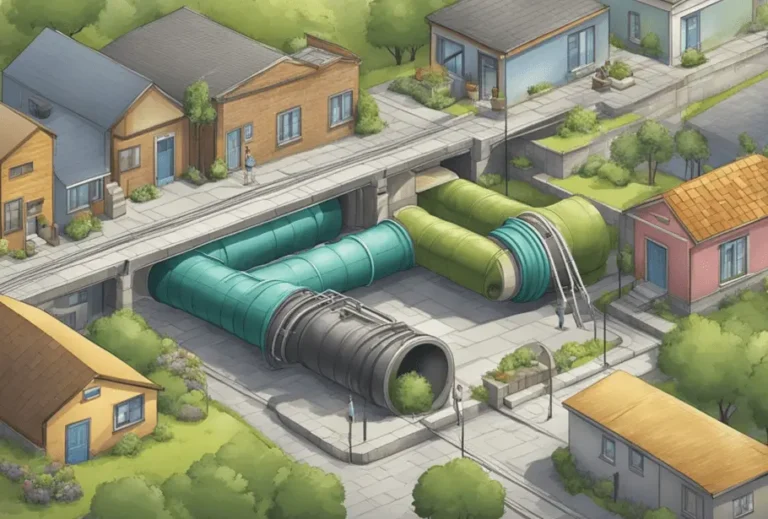FIVE-STAR TEAM WARRANTY &
SAME-DAY SERVICE
How Do I Know If I Have a Shared Sewer: Identifying Common Signs
Determining whether a property has a shared sewer is crucial for homeowners and tenants alike. A quick way to know if you have a shared sewer is to check your property deeds or ask your local water authority for records. Shared sewers can have implications on maintenance responsibilities and related expenses.

Neighbors often share sewer lines, leading to potential disputes or joint resolutions. Visible signs like multiple properties with sewer covers in close proximity or shared sewer bills might indicate that your sewer system is interconnected with others.
If there are frequent blockages or backflow issues, it might point to a shared sewer scenario. Regular inspections and clarifications with your neighbors can also provide valuable insights.
Identifying Shared Sewer Responsibility
Understanding who is responsible for a shared sewer involves looking at legal guidelines and property details. Key points to focus on include the legal framework governing sewer ownership and examining property deeds and sewer maps.
Legal Framework and Ownership
Property laws dictate sewer responsibilities.
Municipal Codes: Examine local regulations to understand who oversees shared sewer systems. These rules are often specific to the area and outline maintenance duties.
Homeowner Associations (HOAs): Some communities have HOAs that manage shared sewers. If the property is in such an area, check the HOA agreements for details.
Easements: Legal documents known as easements might exist, granting shared access to sewers across properties. Review these to understand specific obligations.
Property Deeds and Sewer Maps
Checking property deeds and sewer maps can clarify shared sewer responsibilities.
Deeds: Property deeds may detail sewer line agreements. Look for any references to shared infrastructure or easements.
Sewer Maps: Local planning offices or utility companies keep sewer maps showing the layout of sewer lines. These maps can reveal if a sewer line serves multiple properties.
Survey Reports: Property surveys often include information about sewage systems. Request a copy of any survey conducted during the purchase or construction of the property.
Signs of Shared Sewer Issues
Identifying a shared sewer issue can prevent significant damage and costly repairs. Look out for unusual plumbing symptoms and external indicators that point to potential problems.
Unusual Plumbing Symptoms
Residents often notice strange plumbing behavior, such as frequent clogs in multiple fixtures. For example, a toilet clog might coincide with slow draining sinks or bathtubs.
Gurgling noises emerging from drains when using the plumbing in another area can also signal trouble. This occurs because the pressure imbalances in the pipes cause air bubbles to move.
Foul odors emanating from drains might be another clue. The smell of sewage in surprising places points to blockages or breakages in shared sections of the sewer line.
External Indicators and Investigations
Wet spots in the yard, especially if they lead to pools of standing water, often point to underground sewer problems. These areas might be damp even in dry weather periods.
An increase in rodent and insect activity around your property can indicate sewage leaks. Rats and insects are attracted to the moisture and waste present in faulty sewer systems.
Utilize professional inspections and camera surveys to locate and understand the issues better. Technicians can insert cameras into sewer pipes to pinpoint blockages and breaks without extensive digging.
Post views: 739
Latest posts

How Long Do Water Heaters Last? Typical Lifespan by Type (Homeowner’s Guide)
Your water heater works quietly behind the scenes every single day until one day it doesn’t. One of the most common...

Electrical Panel Upgrade California: Costs, Safety & When You Need One
An electrical panel upgrade in California is one of the most important safety and performance improvements a...


If you still have questions or need advice, please leave a request and we will contact you as soon as possible
Need a plumber and got no clue where to start?
(408) 539-6936Facing a plumbing issue? Get a FREE in-person estimate and quick solutions from our skilled technicians, ensuring your home runs smoothly again!
